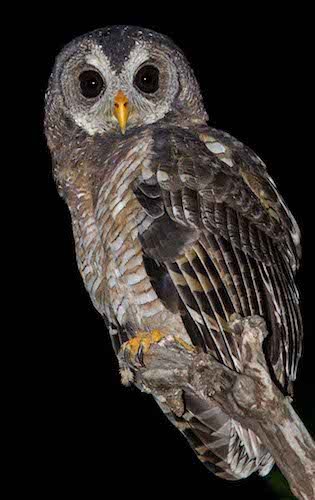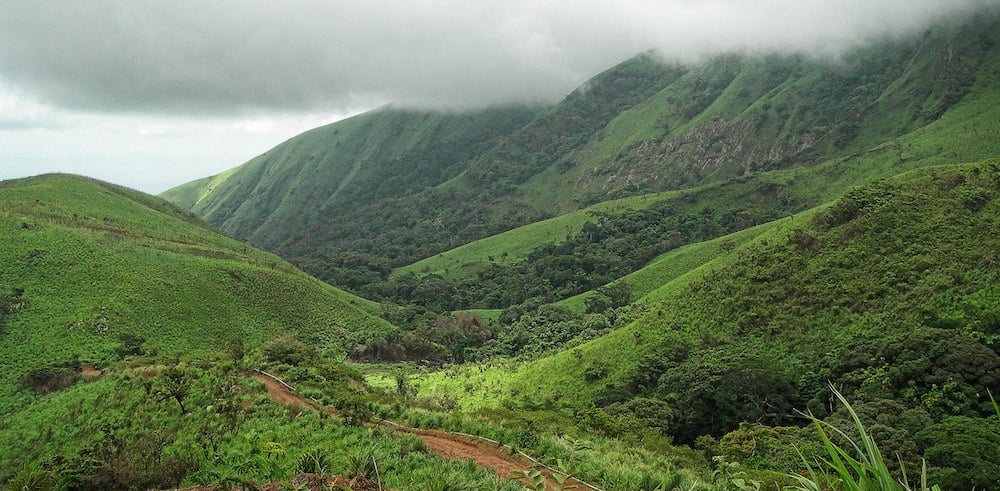Republic of Guinea

Guinea is a country in West Africa formerly known as French Guinea. The country covers almost 246,000 square kilometres (c.95,000 square miles) with a population of over 14 million people, more than two million of whom live in the capital city, Conakry. The country has a crescent shape, with its western border on the Atlantic Ocean, curving inland to the east and south. The Atlantic coast borders Guinea-Bissau to the north and Sierra Leone to the south. The inland part neighbours Senegal to the north, Mali to the north and north-east, Côte d’Ivoire to the south-east, and Liberia to the south. Its water sources include the Niger, Senegal, and Gambia rivers.
Guinea is roughly the size of the United Kingdom and slightly smaller than the US state of Oregon. There are 320 km (200 miles) of coastline. The total land border is 3,400 km (c.2,100 miles). It is divided into four main regions: the Basse-Cote lowlands in the west along the coast; the cooler, mountainous Fouta Djalon that run roughly north-south through the middle of the country, the Sahelian Haute-Guinea to the northeast and the forested jungle regions in the southeast, each with different ethnic groups. Guinea’s mountains are the source for the Niger, the Gambia, and Senegal Rivers, as well as the numerous rivers flowing to the sea on the west side of the range in Sierra Leone and Ivory Coast.
The highest point in Guinea is Mount Nimba at 5,748 feet (1,752 m). Although the Guinean and Ivorian sides of the Nimba Massif are a UNESCO Strict Nature Reserve, the portion of the so-called Guinean Backbone continues into Liberia, where it has been mined for decades; the damage is quite evident in the Nzérékoré Region.
The country is rich in natural resources which are largely untapped. The population is largely rural and agriculture, fishing and forestry are still very important.
Birding Guinea
The southern part of Guinea lies within the Guinean Forests of West Africa Biodiversity hotspot, while the north-east is characterised by dry savanna woodlands. Declining populations of some animals are restricted to uninhabited distant parts of parks and reserves.

Mount Nimba Strict Nature Reserve – ©Guy Debonnet CC BY-SA 3.0 IGO via Wikimedia Commons
Strongholds of Guinean wildlife are Pinselly Classified Forest, National Park of Upper Niger, Badiar National Park, Mount Nimba Strict Nature Reserve, Ziama Massif, Bossou Hills Reserve, and Diécké Classified Forest.
Despite degraded habitat in many places the birdlife is still diverse and well over 700 species have been recorded.
-
Wikipedia
GNU Free Documentation License
https://en.wikipedia.org/wiki/Guinea-Bissau
-
Number of bird species: 747
(As at June 2024)
-
Avibase
PDF ChecklistThis checklist includes all bird species found in Guinea , based on the best information available at this time. It is based on a wide variety of sources that I collated over many years. I am pleased to offer these checklists as a service to birdwatchers. If you find any error, please do not hesitate to report them. -
Wikipedia
Annotated ListStrongholds of Guinean wildlife are Pinselly Classified Forest, National Park of Upper Niger, Badiar National Park, Mount Nimba Strict Nature Reserve, Ziama Massif, Bossou Hills Reserve, and Diécké Classified Forest.
-
Birds of Western Africa
| By Nik Borrow & Ron Demey | Christopher Helm | 2014 | Edition 2 | Paperback | 592 pages, 266 plates with colour illustrations; colour distribution maps | ISBN: 9781472905680 Buy this book from NHBS.com -
Birds of Western and Central Africa
| By Ber van Perlo | Princeton University Press | 2003 | Paperback | 384 pages, 109 plates with colour illustrations; colour & b/w illustrations, 1500+ b/w distribution maps, colour maps | Out of Print | ISBN: 9780691007144 Buy this book from NHBS.com
-
BR Ziama Massif
InformationSatellite ViewThe Ziama Massif is part of the Guinean montane forests ecoregion, and harbors a distinct flora and fauna from the surrounding lowlands. -
IBAs
WebpageSatellite ViewThe avifauna of Guinea is poorly known and large areas of the country have yet to be surveyed. Over 600 species have been recorded of which almost a hundred are Palearctic migrants and 17 are species of global conservation concern. Parts of the Upper Guinea Forests Endemic Bird Area (EBA) extend into south-east Guinea and 12 of the restricted range species of this EBA have been recorded. The south-east and parts of the south-west are occupied by the Guinea-Congo Forests biome of which 148 species have been recorded. The Sudan-Guinea Savanna biome covers the northern two thirds of the country with 33 species of this biome recorded. The coasts are estimated to hold, at times, over half a million waterbirds, principally migrant waders. -
NP Badiar
InformationSatellite ViewBadiar National Park is a national park in Guinea, on the border with Senegal and contiguous with Senegal's much larger Niokolo-Koba National Park. -
NP Upper Niger
InformationSatellite ViewThe park covers around 6000 square km of in the north-eastern area of the country, of which 600 square km comprise the core area. The park protects important tracts of forest and savannah, and is considered a conservation priority for West Africa as a whole. Surveys of the park have shown a diverse mammalian and avian fauna. Over 94 species of mammals have been found in the park, and more can be inferred. Important species found in the park include giant pangolins, West African chimpanzees, Gambian mongooses (a rare, endemic species that seems to be well represented in the park), kob, and spot-necked otters. lions and African manatees have also recently been confirmed. -
NR Mount Nimba Strict Nature Reserve
InformationSatellite ViewThe reserve covers significant portions of the Nimba Range, a geographically unique area with unusually rich flora and fauna, including exceptional numbers of single-site endemic species, such as Nimbaphrynoides (a genus of viviparous toads), the Nimba otter shrew, and multiple species of horseshoe bats.
-
2004 [02 February] - Mary Crickmore
ReportSIB Hotel is at the top of a slope with grass and tall trees at the edge of Dalaba town. There is an area of trees and dense herbage right by the hotel. Next to it is a grassy area with scattered trees that had been recently burned. Beyond this is a rocky outcrop which is forested on the top and on the side closer to town. In some areas the shrubbery is too thick to walk through. There was no standing or running water in February. -
2023 [02 February] - Frank van Groen - Gambia to Ivory Co
PDF ReportDalaba : with 1200 m above sea level Dalaba is the highest town of Guinea. We spent here two nights in a good hotel, an

